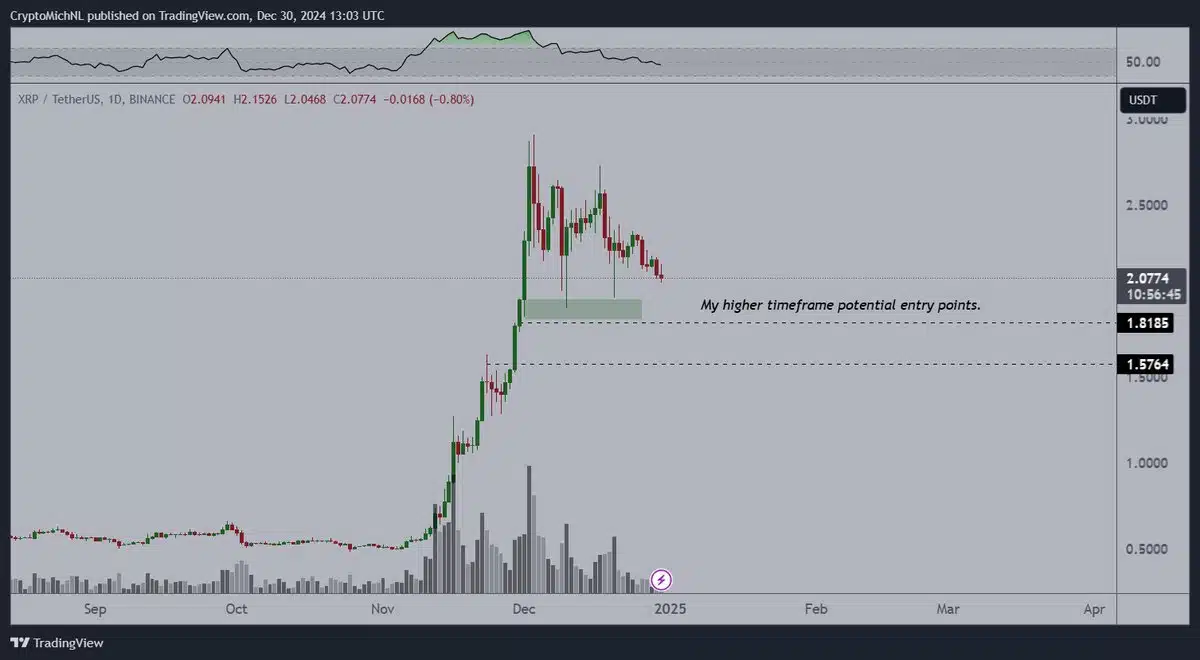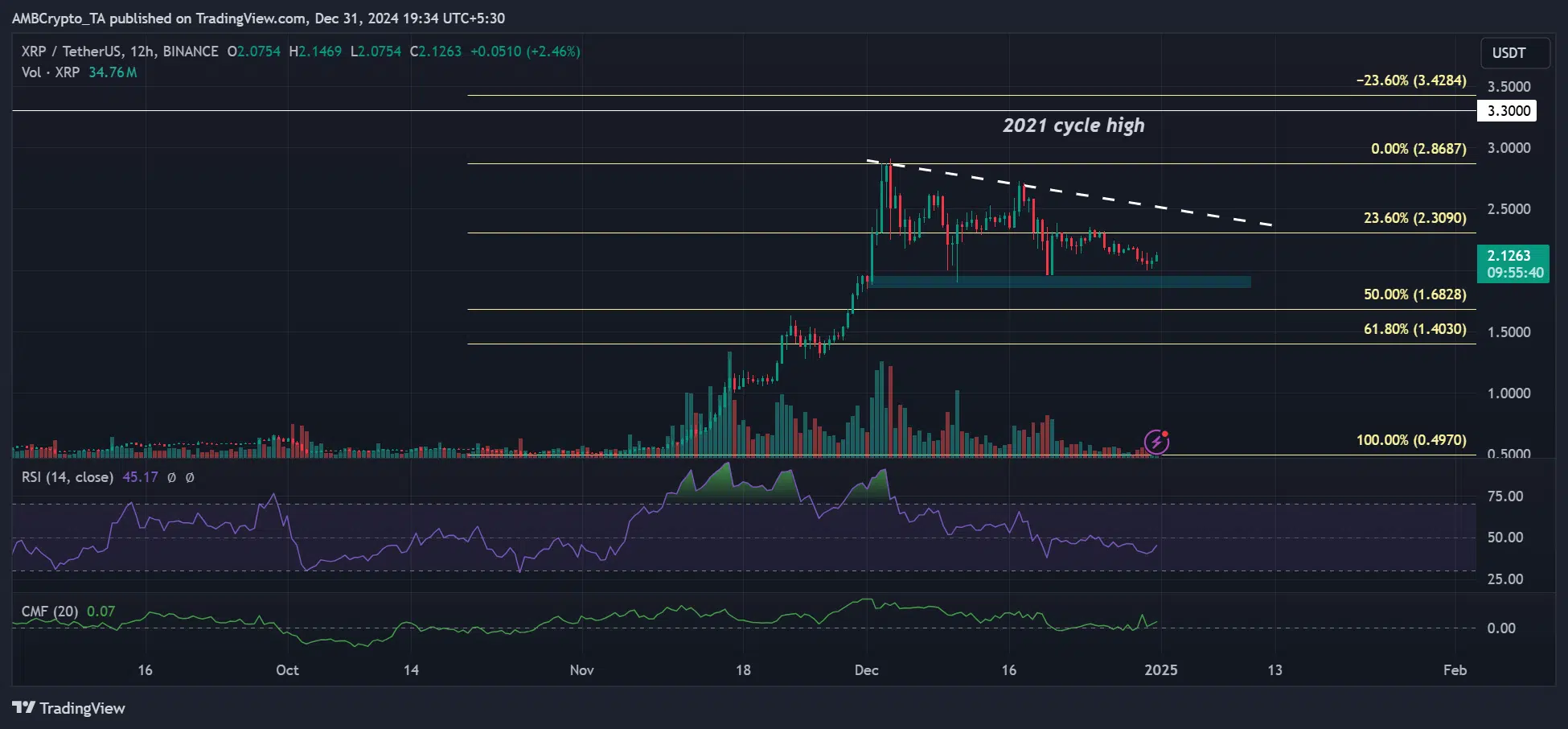Why is XRP down today? Broader market sell-off & low volumes cap price

- XRP dropped amid shrinking trading volume after the Fed’s hawkish rate cut
- XRP has defended the $2 support level ahead of a key SEC update in mid-January
XRP and Cardano [ADA] were the top beneficiaries of strong altcoin season momentum in November. In fact, XRP rallied by over 400% over the same period, which saw Bitcoin [BTC] hit a record high of $108k.
However, most of the November gains were erased after the hawkish Fed rate cut in December. The broader market sell-off saw XRP dump by nearly 30%, dropping from $2.9 to below $2.
CoinMarketCap data revealed that the trading volume dropped from over $51B to $3B over the same period. The low trading volumes capped any potential recovery for the altcoin.
What’s next for XRP?
Most XRP holders are now tracking the SEC appeal submission, which is expected by 15 January and could set the pace for a potential XRP ETF outcome.
The positive update could trigger a strong recovery for the altcoin. In fact, crypto analyst and trader Michael van de Poppe is eyeing a potential rebound around $2, stating that it could be a good entry point for longs.
That being said, the trading volume did show some signs of recovery at press time, especially across top South Korean-based exchanges like Bithumb and Upbit.
Trading pairs between XRP and the local currency (won, KRW) surged by double digits on New Year’s Eve. On Upbit, XRP/KRW trading volume topped $830M, eclipsing the BTC/KRW pair, which was ranked third with $451M.
Similarly, on Bithumb, the XRP/KRW pair had the highest daily trading volume – $261M – translating to an 18% surge.
This indicated renewed speculative interest in the altcoin in Asia. Depending on the market catalyst and price action on charts, this could suggest a potential upside breakout or a bearish drop.
Read Ripple [XRP] Price Prediction 2024-2025
On the price charts, XRP rebounded above $2 and was up 4% on the daily timeframe. However, the 12-hour RSI was still below the key median level at press time, suggesting that the uptrend hadn’t attracted strong demand.








